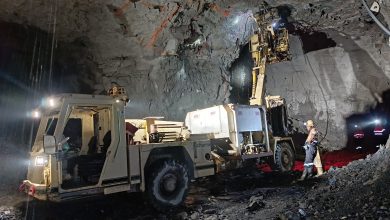
Royalty and streaming financing models have emerged as godsend to junior and mid-tier miners across Africa with limited access to options in the traditional financing domain. Now, the avenues are providing mining companies with much-needed capital. Indications are that in 2022 and beyond more transactions are likely to be witnessed.
One of the most fascinating developments that have risen to prominence in the mining sector amid the gloom of the COVID-19 pandemic is the practice of companies turning to alternative methods to finance their greenfield and brownfield projects in Africa. Palpably, there is a strong correlation between the rise in commodity prices and increase in companies seeking alternative financing methods. Four legal minds from UK Law firm, Gowling WLG – Nath Curtis, Andrew Newberry, Dan O’Donnell and Charles Bond – highlight this point in a review. “Alternative methods of financing mining projects received renewed attention during 2020 as commodity prices rose, with royalties and streams becoming ever more popular,” they state in the article, Mine Finance in Africa: Production-linked loans, Royalties, and Streams.
It is hard to resist the temptation to establish why the mining companies involved are not exploring the ‘tried and tested’ plethora of traditional sources of funding such as private equity, bank finance, state institutional funding and listings on stock exchanges.
Why alternative funding is attractive
To begin with, it is important to consider the profile of the mining companies that are mainly exploring streaming and royalty funding avenues, and their ability to access traditional funding methods.
International financing institutions would not give a second thought funding transnational mining companies that own and operate mining project portfolios in Africa – a luxury many African-owned junior and mid-tier companies may not have. This is based on the rich track record the transnational entities have built for years. On the other hand, the self-same international financing institutions would not be keen to take a gamble on projects owned and run by mostly African-owned junior miner and mid-tier companies. Unfortunately, coming from a region invariably associated with perceived high risks to capital investment, over and above lack of tangible project track record, work against them.
Thus, with dearth of options in the traditional funding space, the last throw of the dice for junior and mid-tier companies becomes seeking an international strategic partnership to assist with finding willing financiers. Nonetheless, the process of finding the right partner, let alone sourcing funds, can be off-putting and convoluted, delaying project launch and missing out on a market boom.
Lenders with an appetite for risk
Due to frustrating barriers they encounter, it is understandable why, for junior and mid-tier mining companies, resorting to alternative funding avenues has become an attractive proposition – essentially the only option. What is working to their favour is that there is an environment where there is a ‘willing lender with an appetite for calculated risk’.
The four analysts from Gowling WLG observe that production-linked loans (debt-instruments with repayment schedules linked to the mine’s production), royalty and streaming financing have proliferated as a result of growing interest from institutional investors. The investors are looking for investment instruments that can offer strong returns. Currently, with rising commodity prices – mainly in precious metals – in African mining, investors view an opportunity for bigger profit margins, lower exposure to risks and portfolio diversification. “These vehicles are contributing to the increased investment in African mining from investors without historic exposure to the metals and mining markets in Africa,” the analysts say.
Just the thing for junior and mid-tier miners
Conveniently, the emergence of alternative funding options is just the thing for African-owned mining companies. Private royalty and streaming funds have come to their rescue through short-term loans and project finance facilities. This works to the advantage of both parties as the risk and reward is shared. “The new forms of funding offer flexibility and the inherent fairer distribution of risk and rewards among the stakeholders,” says Managing Partner and Partner in Charge of Energy, Resources & Infrastructure · Corpus Legal Practitioners in Zambia in his review. On the one hand, a mining company is able to get a production off-the-ground quicker than it would normally take with a normal equity or funding arrangement. On the other hand, there are huge benefits to be had for financiers, as aforementioned.
Fascinatingly, some international mining companies have also joined the bandwagon, resorting to streaming, royalties and production-linked loan funding options.
Set for growth
What is being witnessed is only the beginning. Looking ahead, the royalty and streaming niche is set to grow in 2022 and beyond. This is judging from a number of aspects, which in this context can be condensed into two.
First, predominantly, the royalty and streaming niche is in the precious metals sector. However, the world embraces renewable energy, the alternative funding niche market is set to extend to base and battery metals beyond precious metals.
From the way things stand, traditional funding methods won’t be easily accessible to junior miners anytime soon. And as a consequence, royalty and streaming funding will grow, as different lenders will invest in the African market.
Side bar
Recent transactions in Africa
The following transactions have been financed through alternative funding models:
Zambia
- Part of the acquisition costs of Mopani Copper Mines by the state-owned investment company ZCCM Investments Holdings were funded through a form of royalty financing.
- Large multinational mining companies, which own Mimbula Copper Mine and Lubambe Copper Mines, have opted for innovative funding options
South Africa
- Local bank Pan African Resources accessed funding by receiving a loan of physical gold from a local bank over a 12-month period. The physical gold was used as the funding instrument.
- Royal Bafokeng Platinum entered into a streaming agreement with Triple Flag Mining Finance Bermuda for gold delivery over the life of mine from its Styldrift operation. The company received an advance payment on the closing of the agreement.
- a US$30M term loan facility for Bushveld Minerals was secured through a debt-instrument whose repayment is linked to a mine’s production.
While, potentially, royalty and streaming funding options may offer African-owned miners much needed capital injection, the undeveloped state of the African mining sector may be a hindrance. As can be deduced above, it is not surprising that most South African-domiciled companies dominate the deals. Even the Zambian transactions involve transnational companies. Thus, it is most likely that most investments will involve Australian, Canadian mining and exploration and mining companies.
Sourced from LEX Africa and adopted for Mining Business Africa
Side bar 2
Understanding the basics in alternative funding methods
Royalties
In Royalties, a financier (“Royalty holder”) purchases a right to a percentage of the future revenues of a mine (the “Royalty”) from the miner (“Grantor”) in return for an upfront payment. It is noteworthy that this is not a new concept, having been applied for decades, and is not to be confused with the royalties (essentially taxes) collected by sovereign governments in return for mining rights.
Streaming agreements
In Streaming agreements, the streaming company (“the streamer”) agrees to purchase minerals from the mining company (“grantor”) in return for an upfront payment (“the deposit”) and future payments on delivery of the minerals. In terms of the long-term agreement, the price at which the streamer agrees to purchase minerals in the future will be set. In most cases, the price would be below the spot price for the mineral.
The convenience about streaming is that the Grantor is able to monetise minerals in advance of production to gain access to much needed capital on deposit and have certainty of funds for future production. Furthermore, the Grantor gains a valuable partner in the streamer who shares in some of the production risk and, because streams often deal with the by-product of a mine’s core operation, a partner with expertise in that non-core mineral.
Production-linked payment
An alternative to royalty and streaming finance are debt-instruments with repayment schedules linked to the mine’s production.
Source: Gowling WLG






